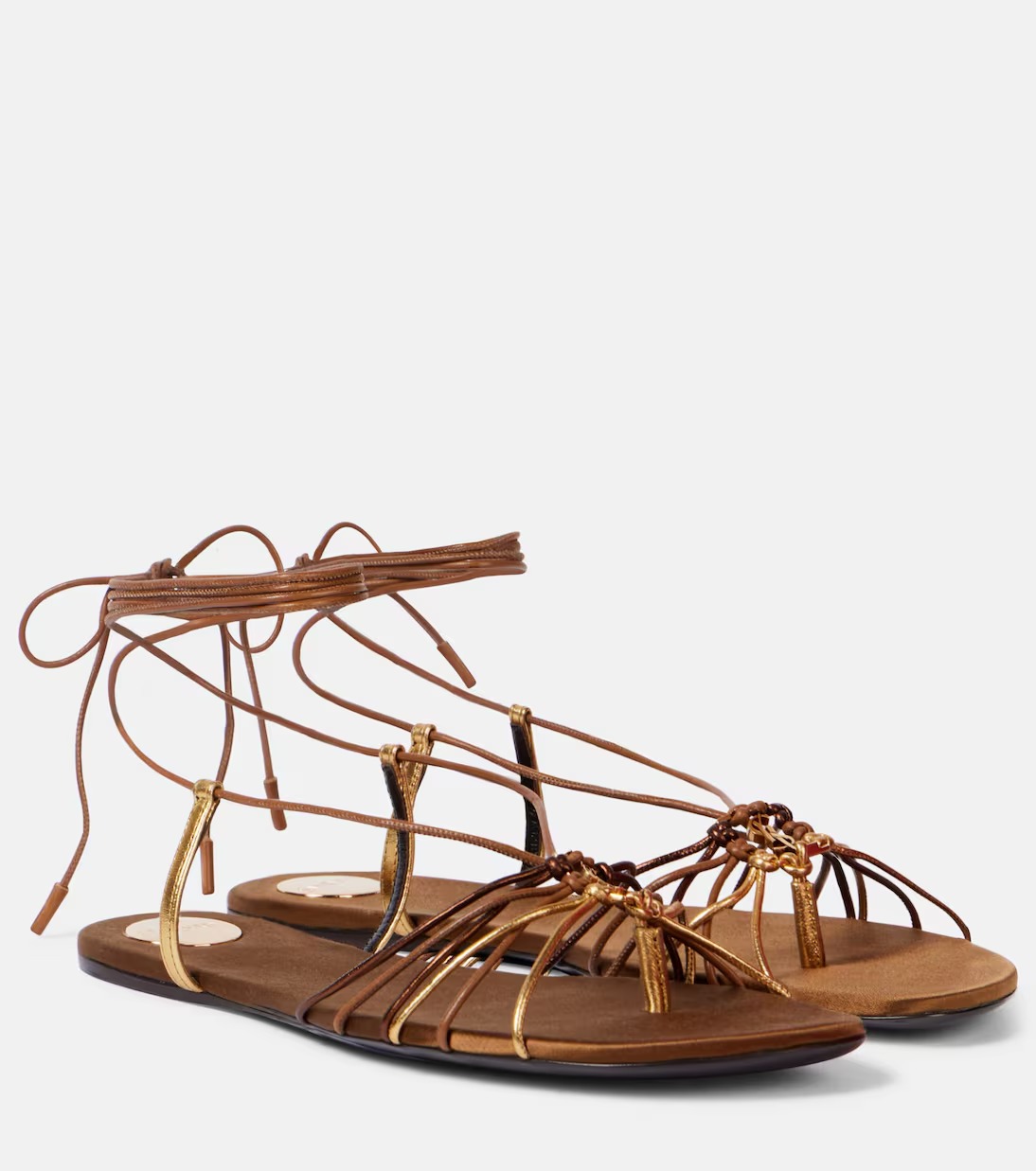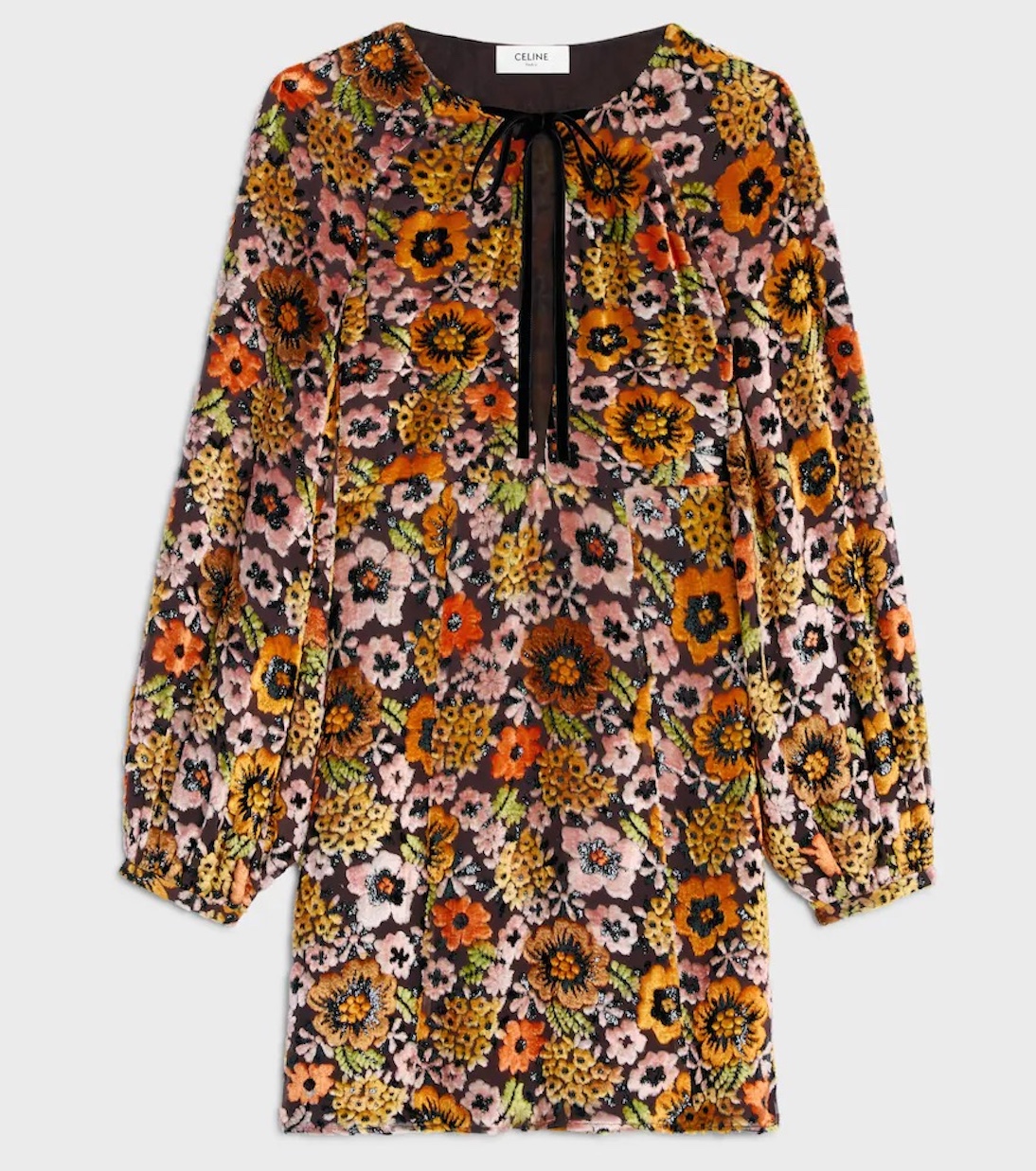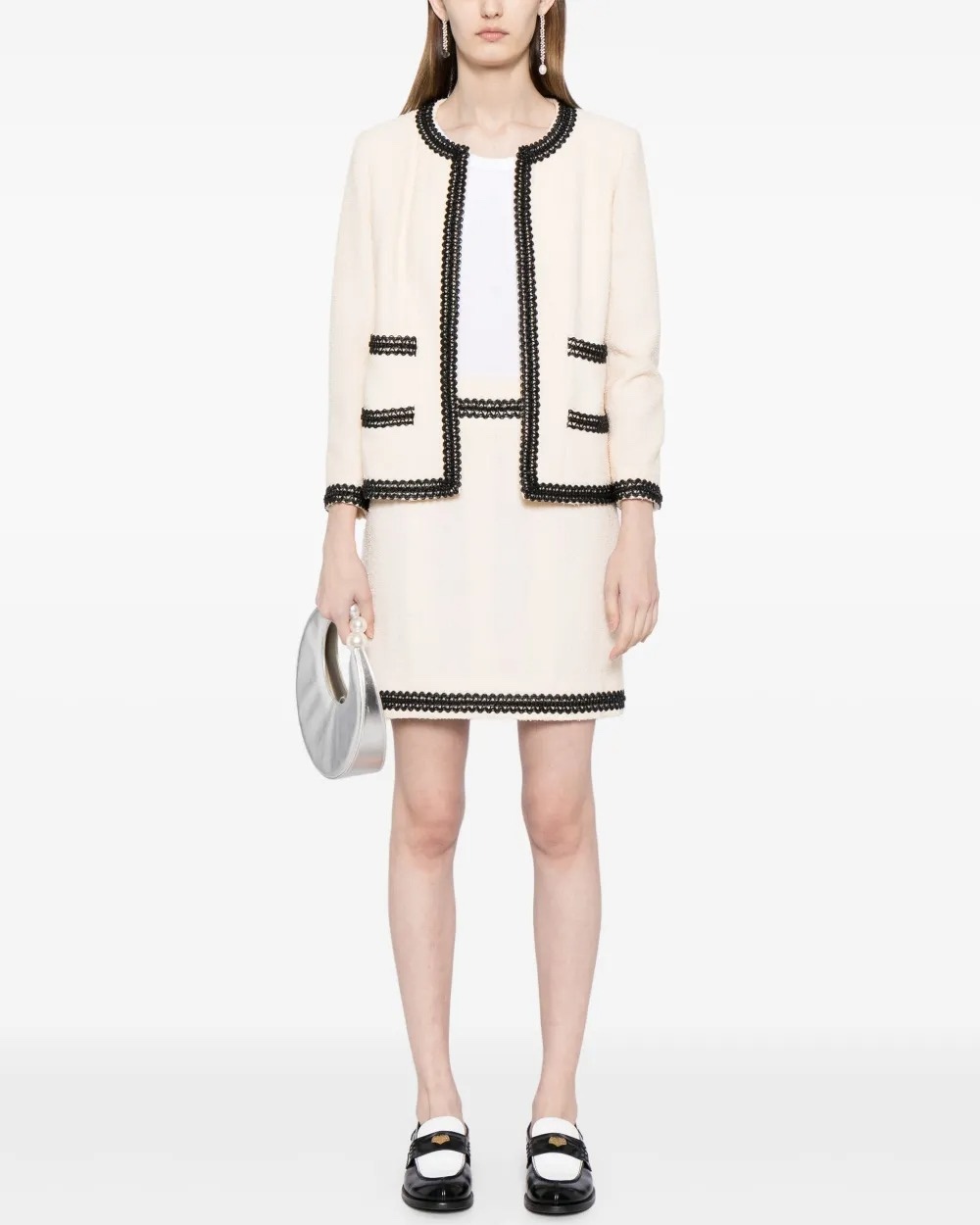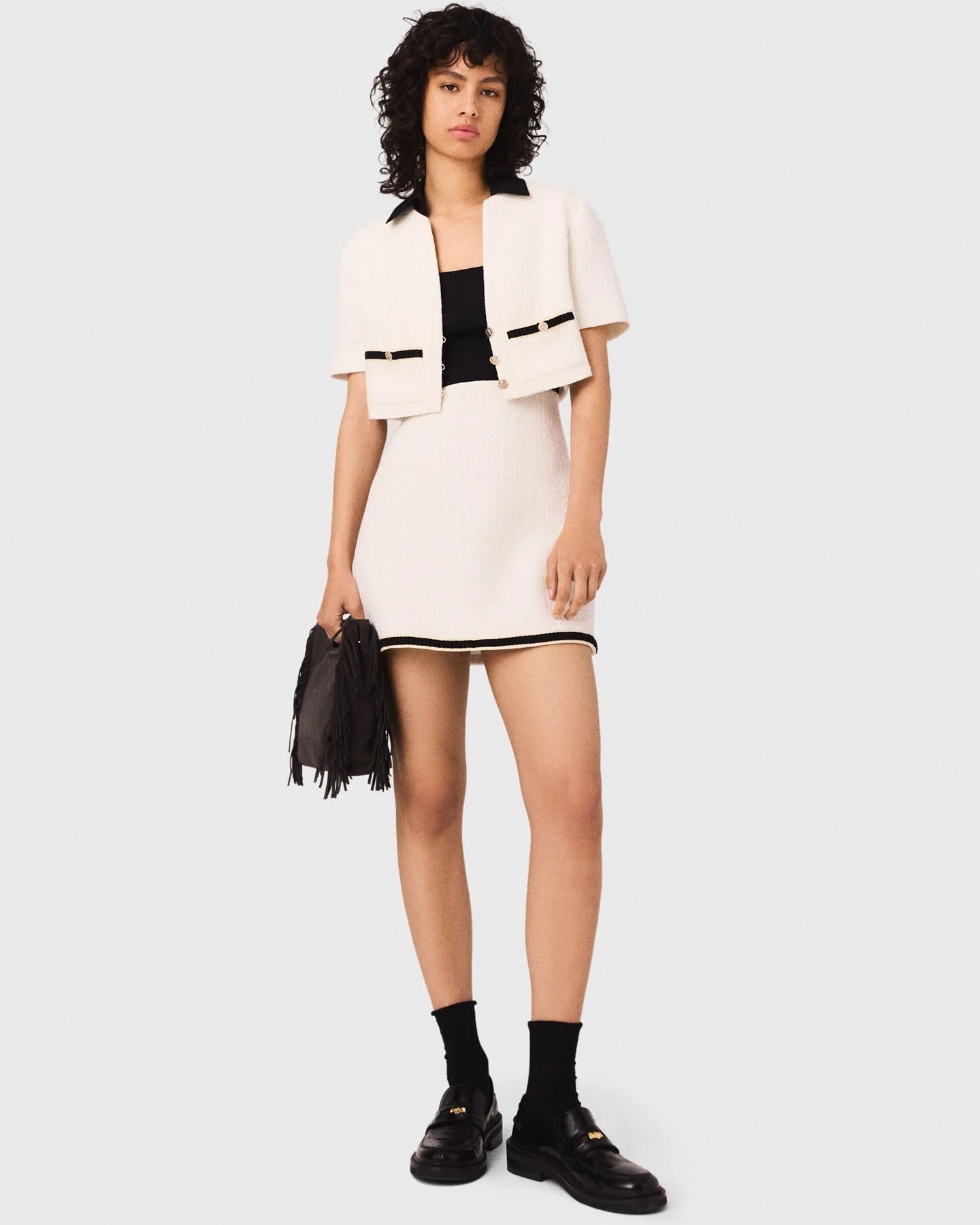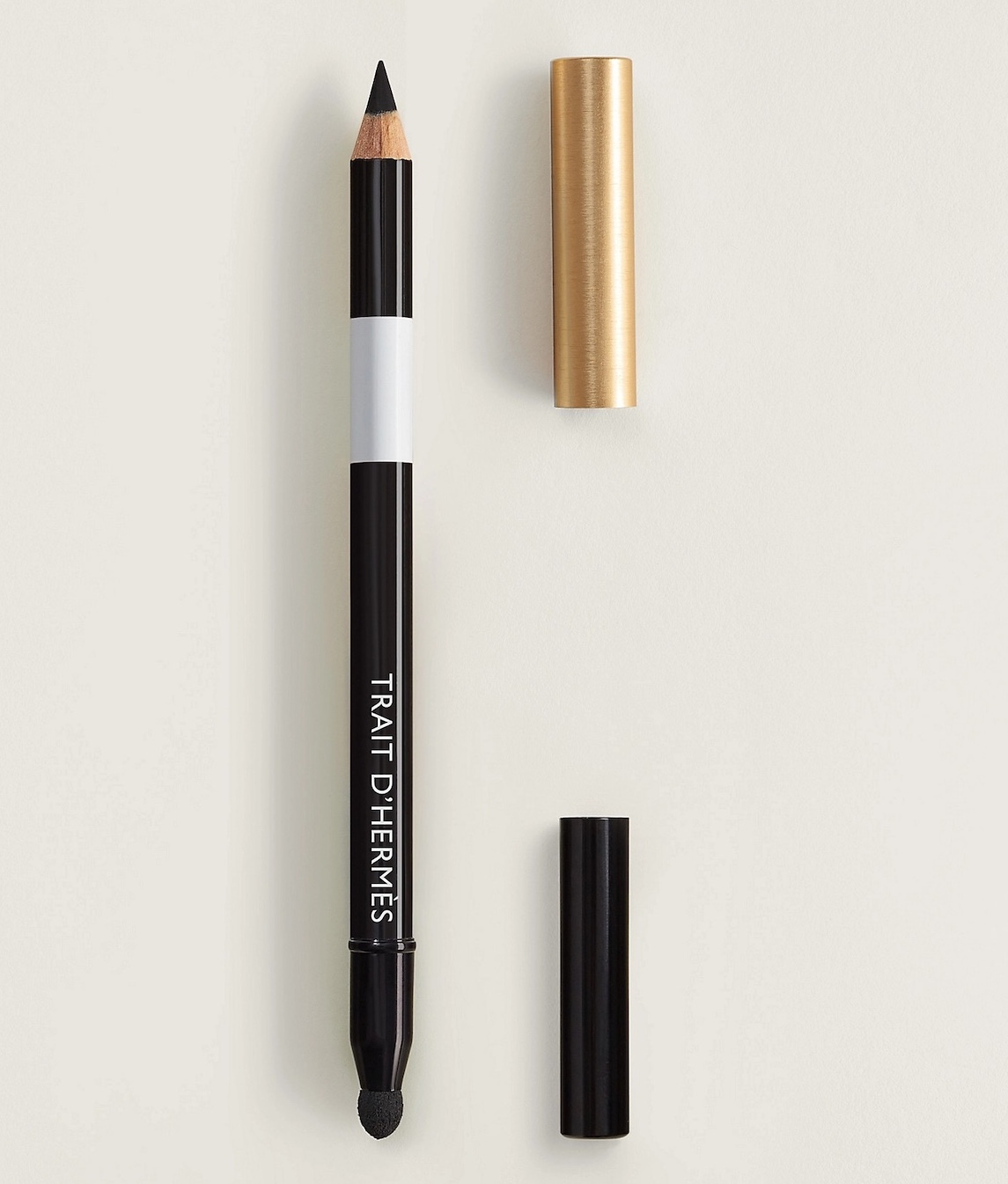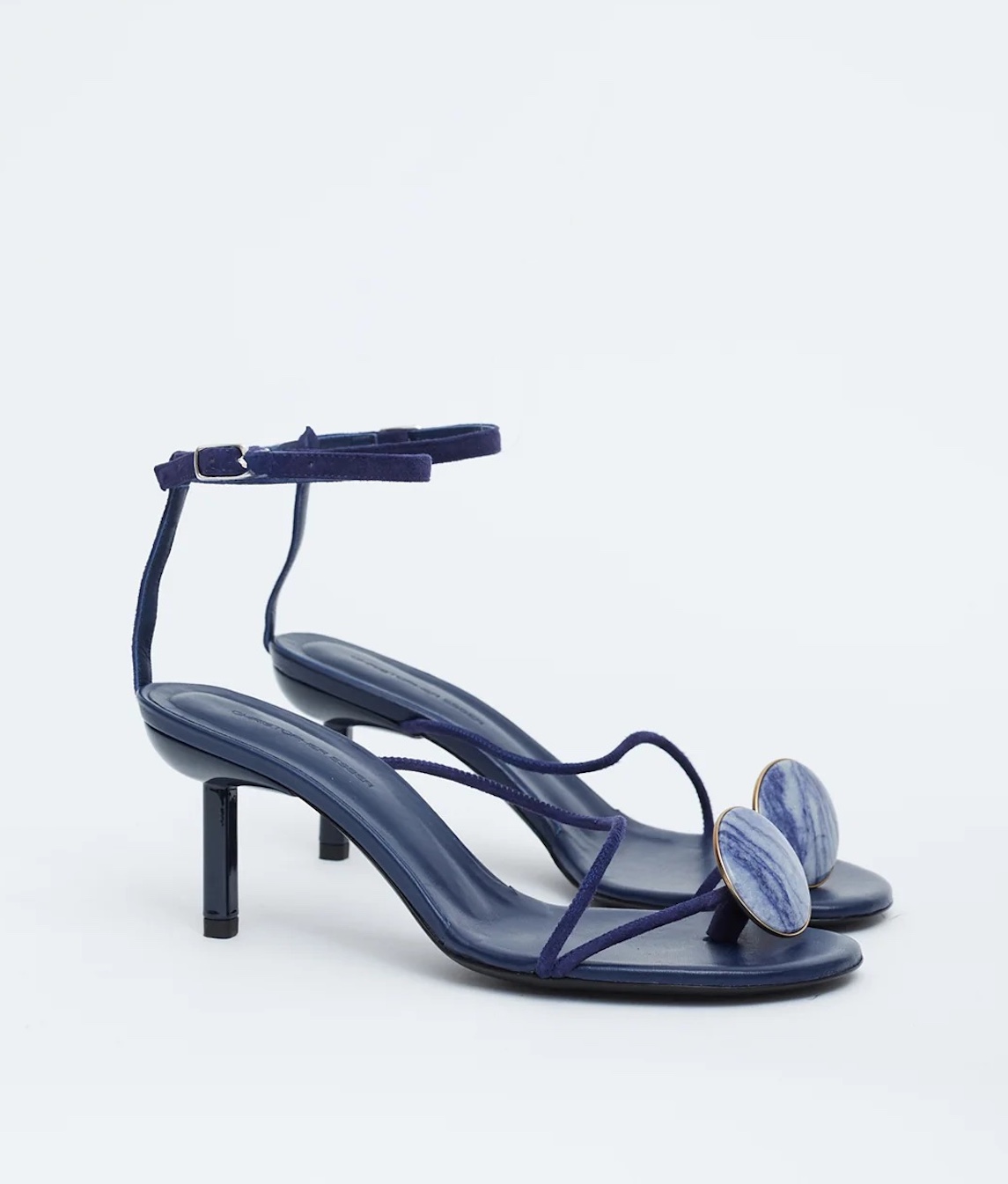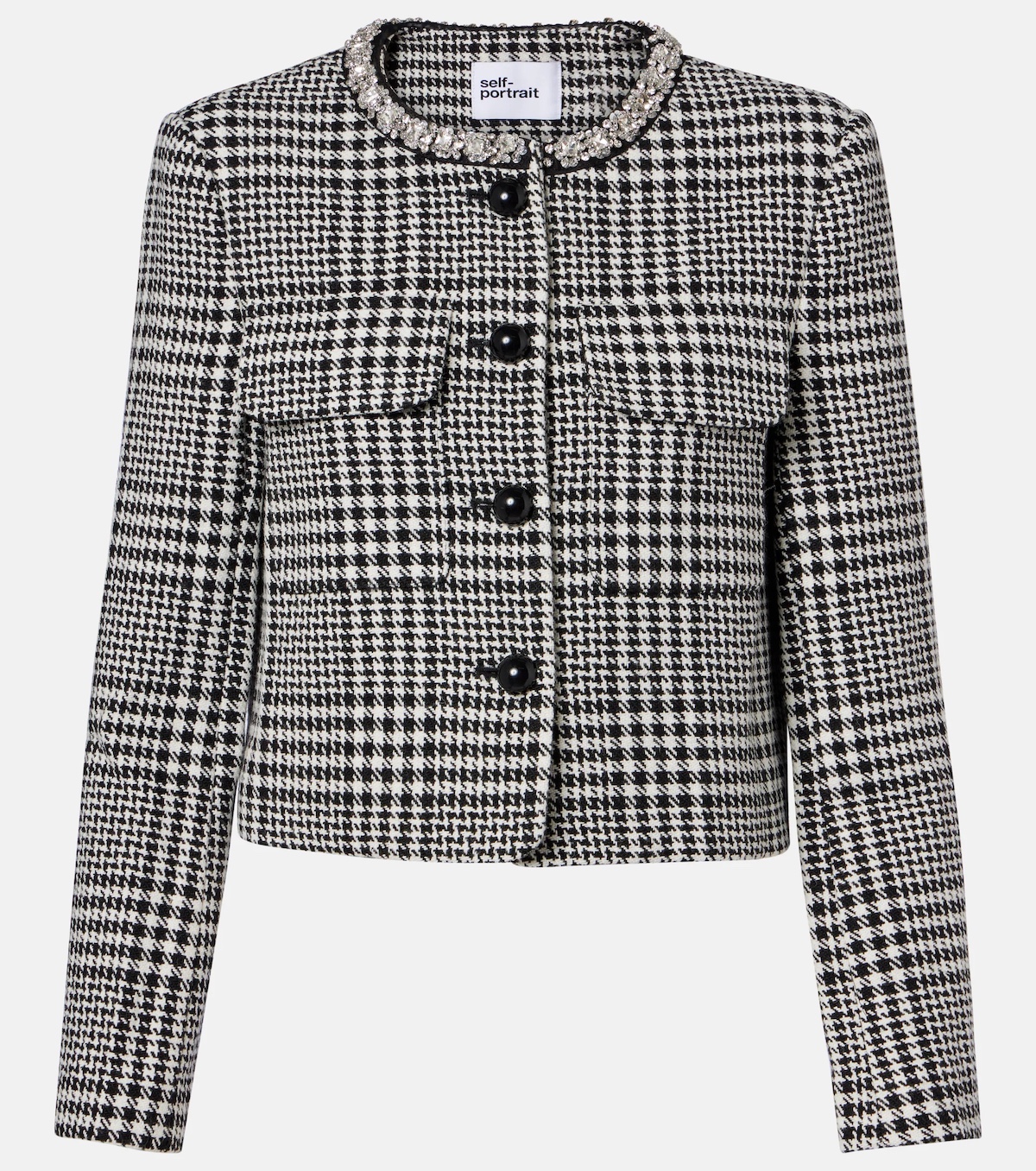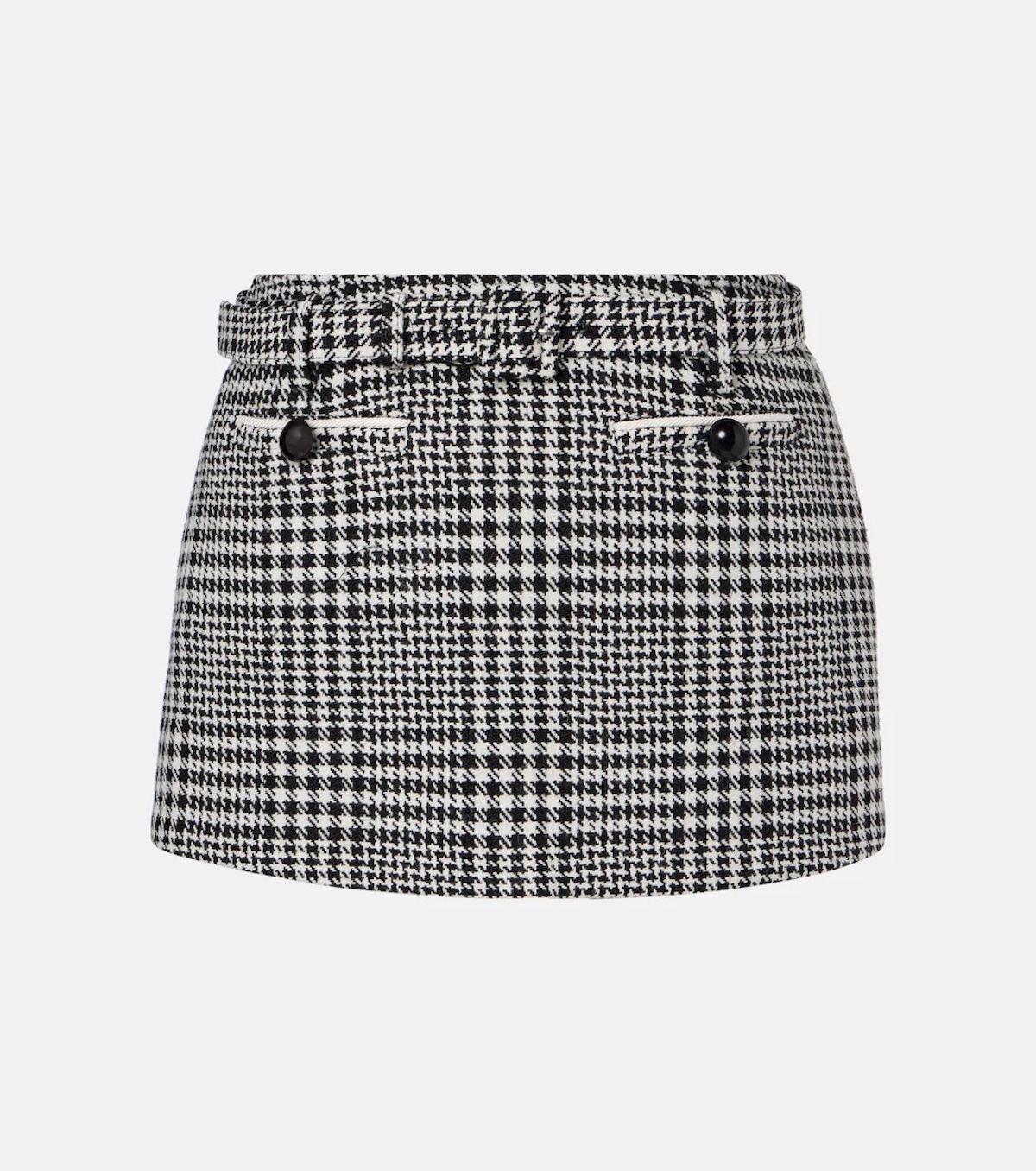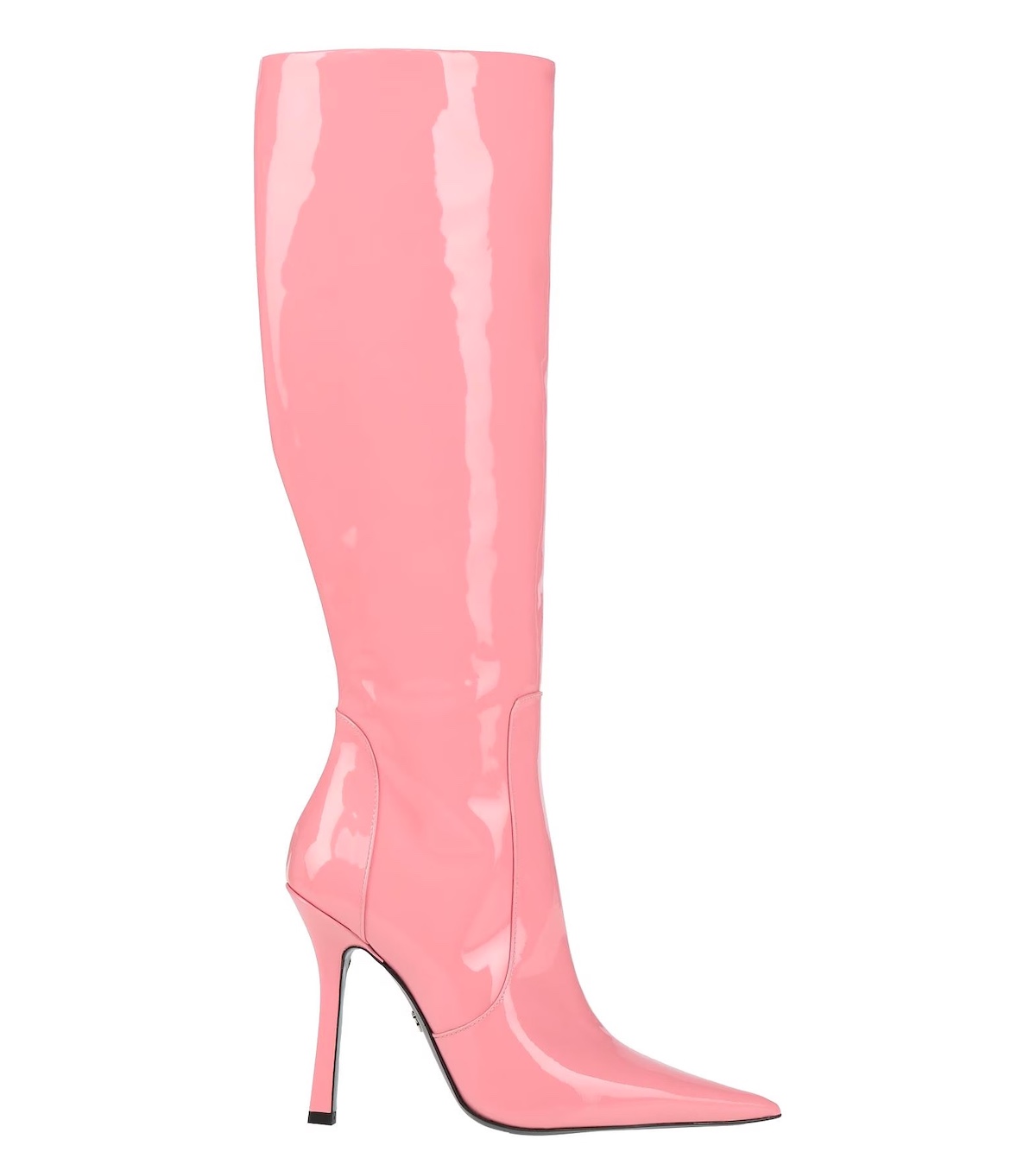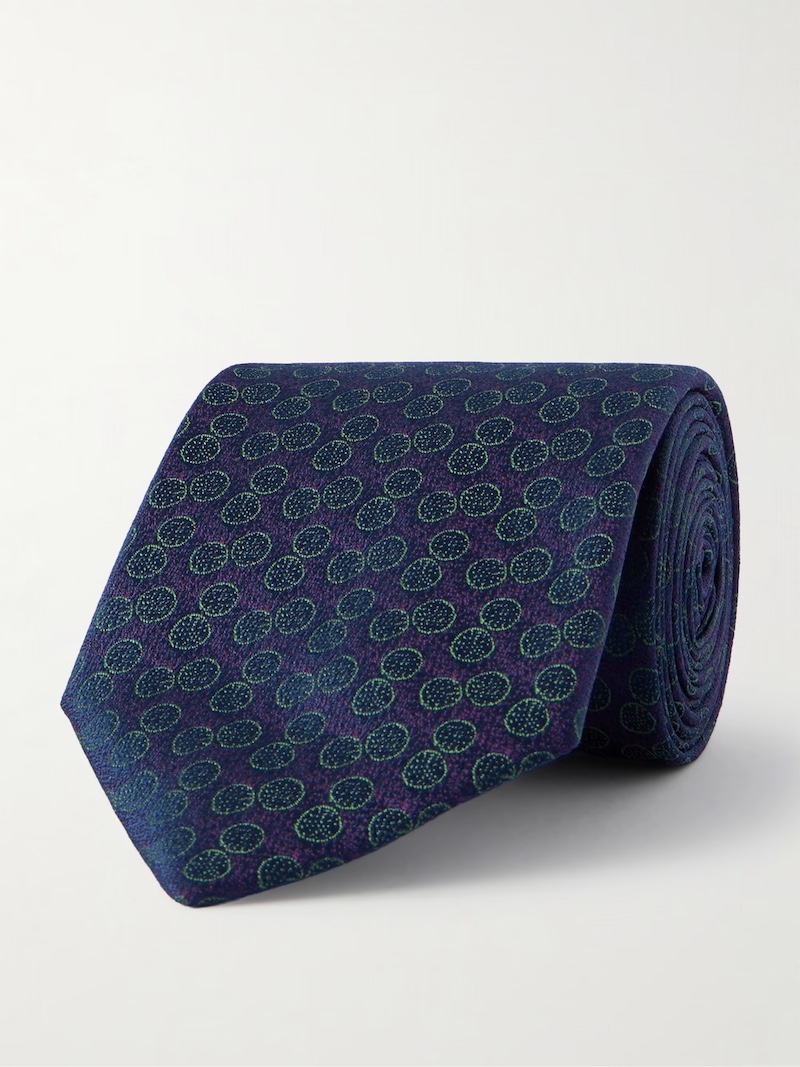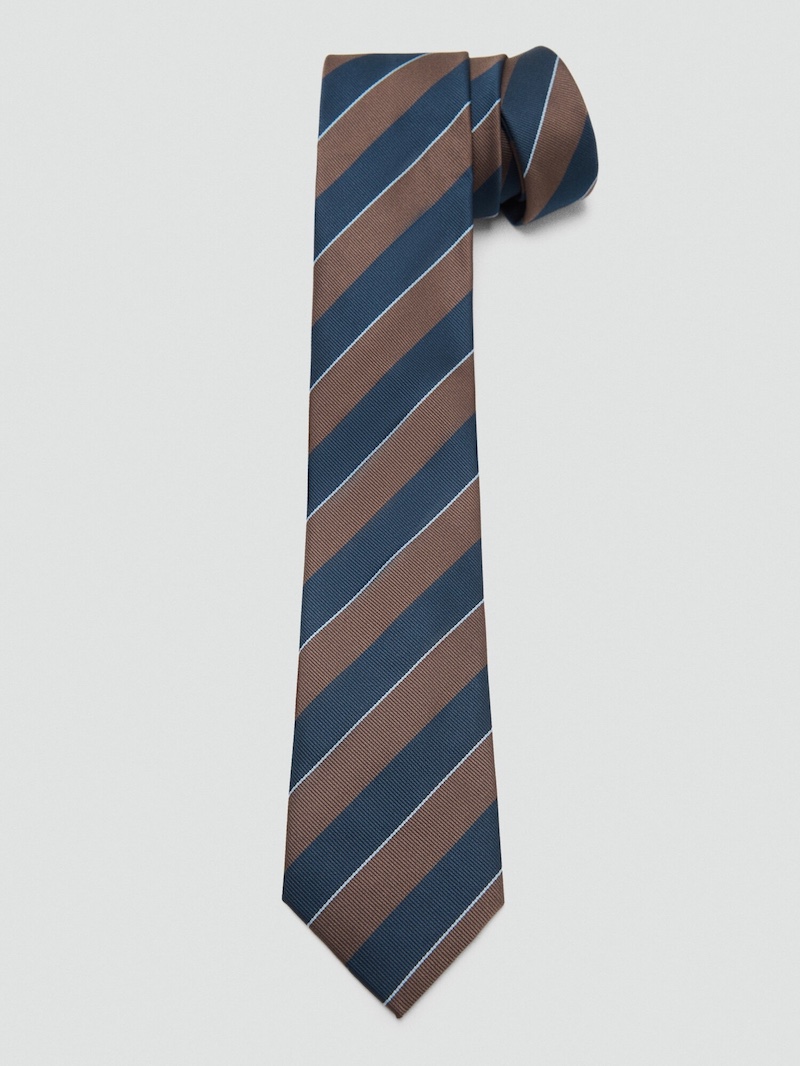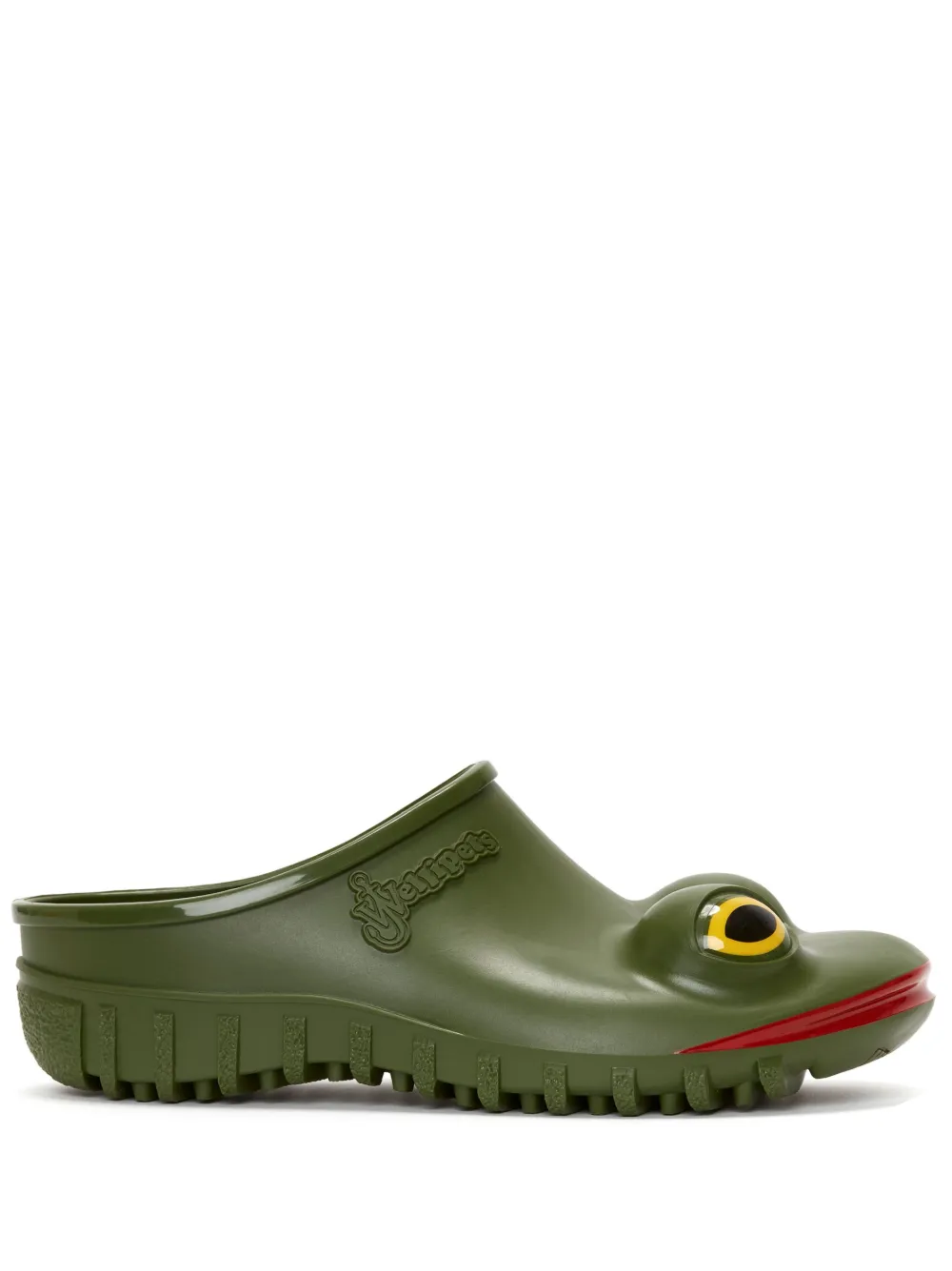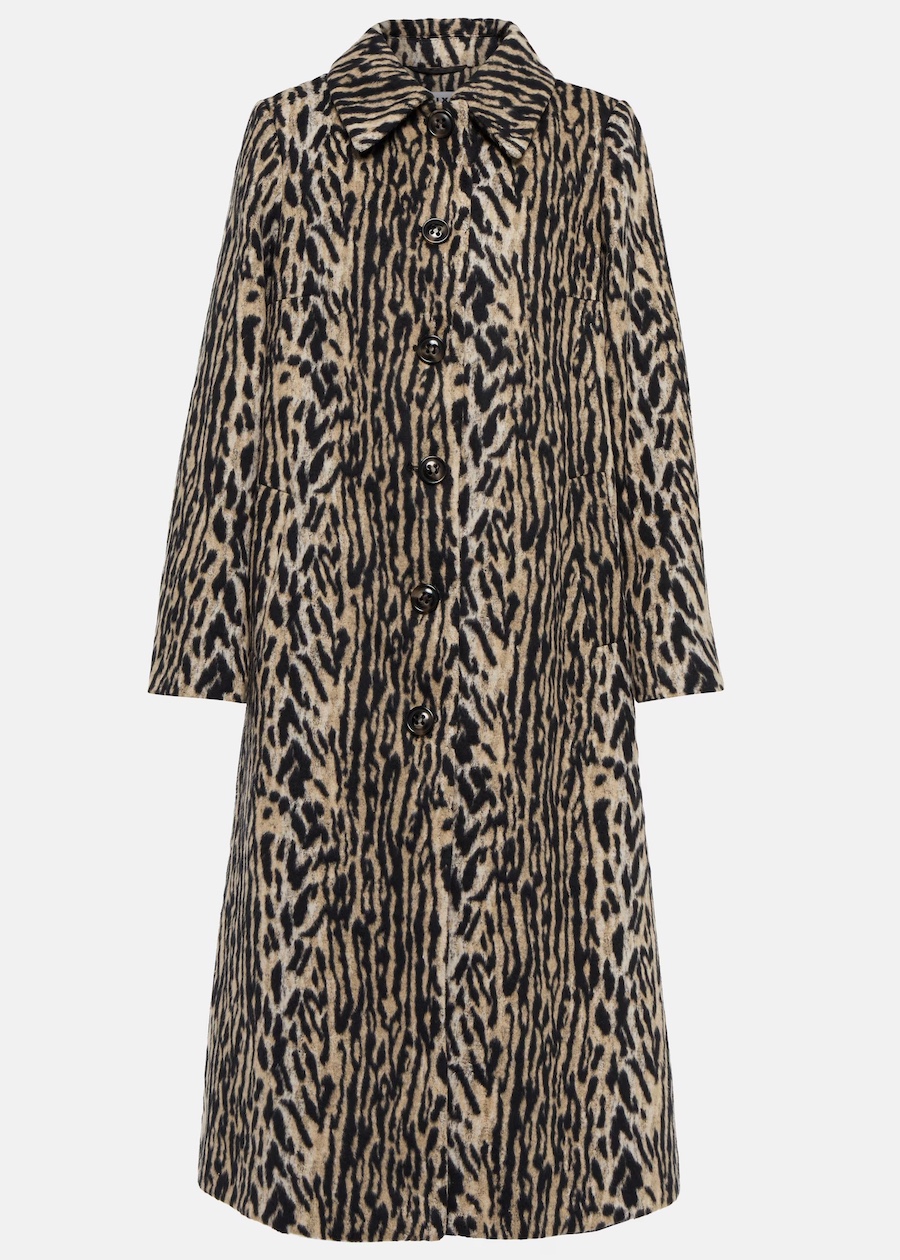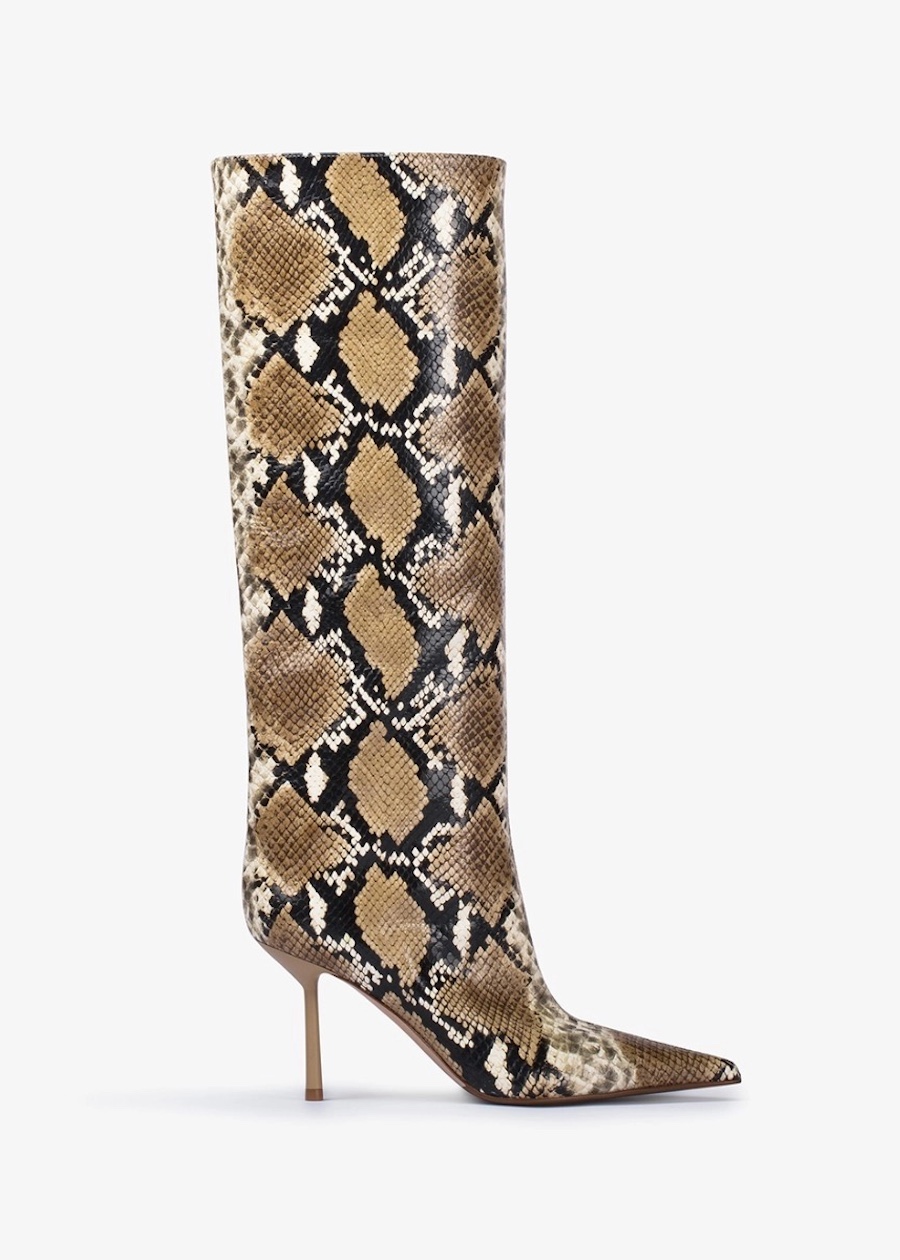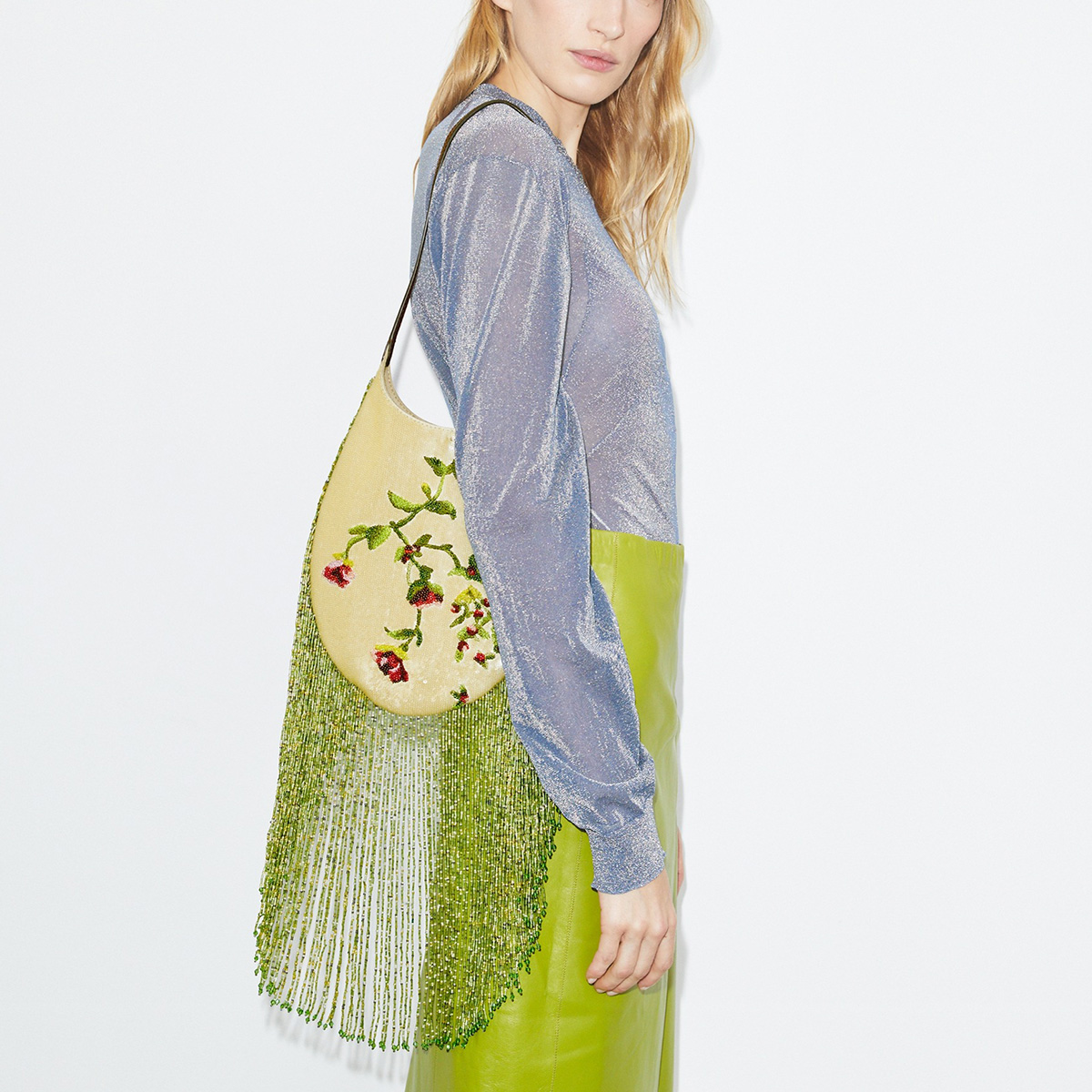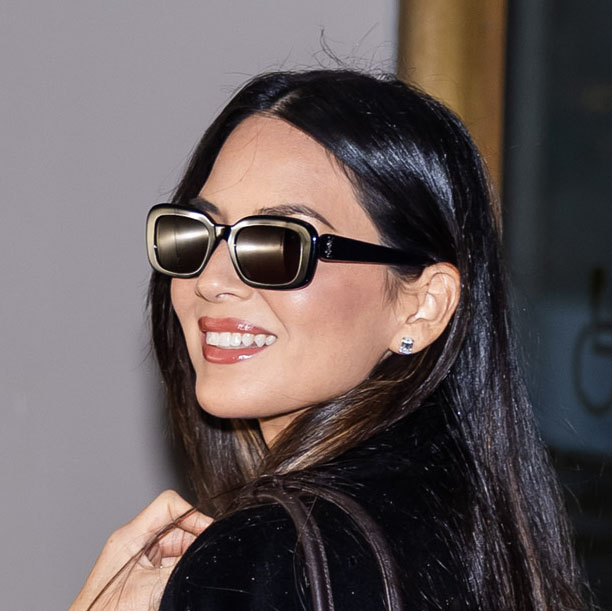I Showed My Closet to a Therapist—Spoiler: She Wanted to Talk About the Leopard-Print Coat
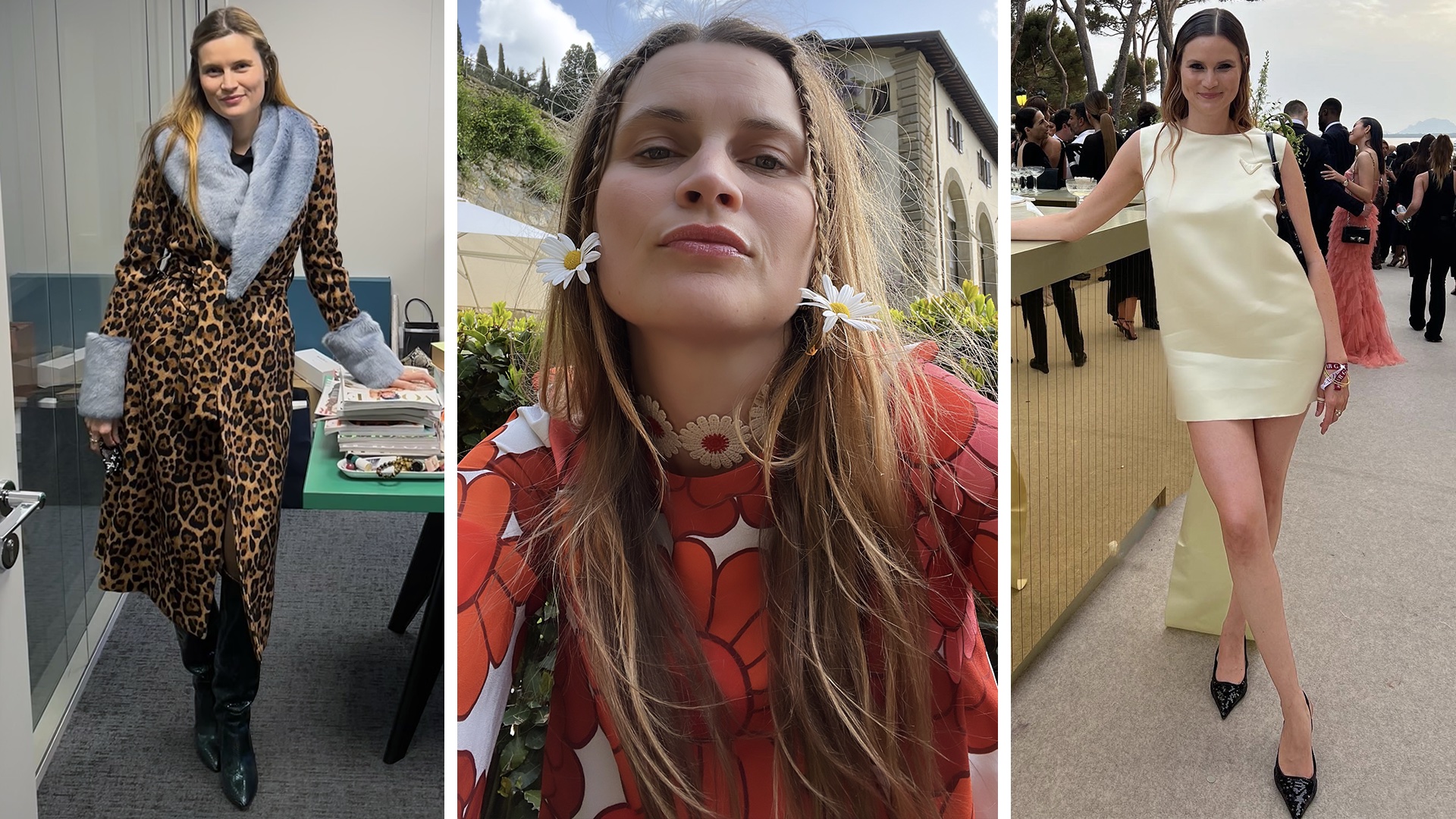
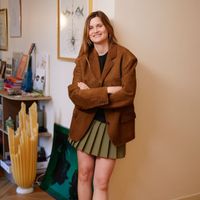
Eugénie Trochu is a Who What Wear editor in residence known for her transformative work at Vogue France and her Substack newsletter, where she documents and shares new trends, her no-nonsense approach to fashion and style, plus other musings. She's also working on her upcoming first book that explores fashion as a space of memory, projection, and reinvention.
L.’s office looks like the Pinterest board of someone perfectly stable—like an Architectural Digest spread that went a little too far. Everything is white, minimalist, almost clinical, with pops of color clearly meant to “warm up the atmosphere.” A bright red painting (probably too bright) hangs behind the sofa. On the coffee table sits an abstract sculpture I didn’t dare ask about—maybe a hand, maybe a shell, maybe an organ. I’ve always thought doctors, therapists, dentists (even my gynecologist) have an oddly literal taste in art: a bit too symbolic, a bit too on the nose.
The chairs are obviously designer, though I couldn’t tell you which ones. Too low to be comfortable, too expensive to slouch in, the kind of furniture that makes you aware of your posture the second you sit down.
Now, L. She always wears perfect trousers. Not stiff raw denim, not tailored suits either—the in-between kind: slightly masculine, perfectly studied. Neutral cashmere, thin and impeccable, and a dark stone pendant that looks spiritual without drifting into hippie territory. She’s beautiful in that intellectual way—the “I’ve done 10 years of analysis. Have you?” kind of beautiful.
She’s a therapist friend who lives in my building, not my therapist (thankfully, as that would be an ethical nightmare). We run into each other in the stairwell, talk about nothing and everything, and that day I said, a bit too fast, “You know, I’d love to have my wardrobe analyzed.”
She smiles, of course. A slow smile, half amused, half psychoanalytic. And I, caught in my own trap, added, “Do you want to see it?” Silence. Then, “Why not?” I felt instant regret. But a month later, I was at her office, in that too-white space, unpacking the contents of my wardrobe like a confession. She warned me, saying, “I’m not going to analyze you. Just observe.” Which, coming from a therapist raised on Lacan, Anzieu, and Manon Garcia, meant the exact opposite.
The fabric first: A 1960s floral print that evokes both a grandmother on Lexomil and a Jacques Deray movie set.
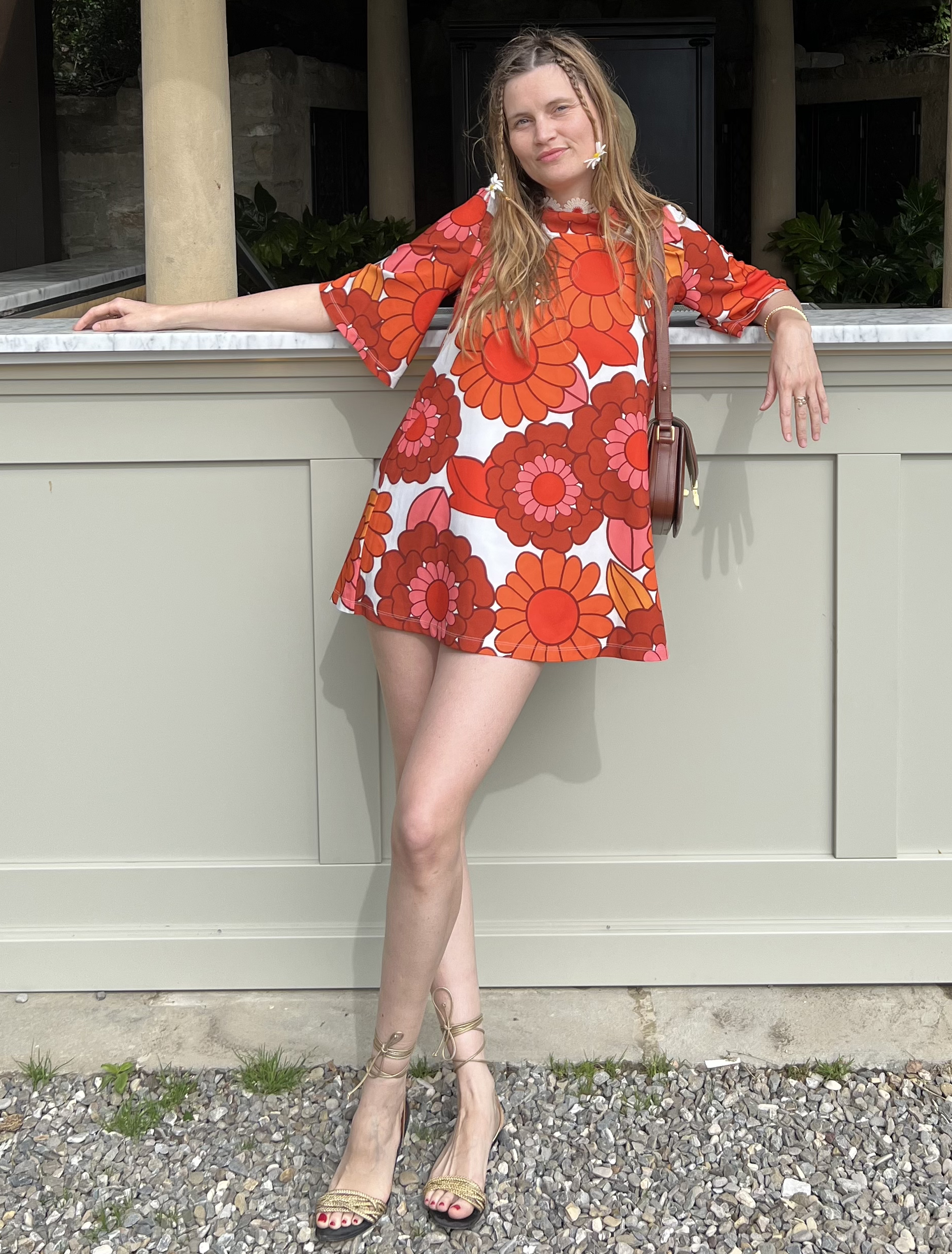
L. looks at the photo and says, “It’s like a piece of upholstery that decided to go for a walk.” And she was right. Worn very short, with two tiny braids framing my face and thin sandals tied at the ankles, the dress slides into a strange territory: not sexy, not innocent, just frankly eccentric. It makes noise with its colors, takes up too much visual space. “The print is the overflow, everything you don’t say out loud, you put on your body,” she added. And that felt truer than anything else. The wallpaper dress is my textile chatter. It talks for me, too loudly, too flowery, too funny. A dress that doesn’t listen but always has something to say.
The white suit was a look you had to see in motion.

In person, it was Chanel on the verge of chaos. A long white tweed blazer, beautifully cut, almost proper—except it wasn’t. Underneath, it was short. Very short. And the shoes? Logo platforms, huge, almost indecent, the kind of heels that turn walking into performance art.
When I arrived at the Chanel cruise show in Monaco, I felt halfway between Le Rocher and the 8th arrondissement. That’s the paradox of this look: everything was too much, yet everything worked. White redeems everything. Tweed civilizes. Bad taste made socially acceptable by the word Chanel. Maybe it was the setting that made it make sense: white against a gray sky, palms, the railing, waves in the background—slightly absurd, therefore perfect. Like a fashion campaign mocking itself.
When I showed the picture to L., she laughed. “That’s the real you—the one who loves flirting with the ridiculous but always gets away with it.” And she’s right. It might be my superpower: staying upright in impossible shoes, looking like I know exactly what I’m doing. Even when I don’t.
The AmfAR Gala at Cannes was a big one, a real event. Everyone in monumental gowns, sparkling jewelry, and million-dollar smiles.

“Collective beauty rituals are often anxiety theaters,” L. says. “It’s funny that you start by describing the décor instead of yourself.” I tell her I’d chosen a Prada dress, the color of an eggshell, with a tiny train. Not a proper gala gown, but more of a short ’60s silhouette.
“You say ‘eggshell,’ but that’s skin imagery,” she says. “Something protective and fragile that can crack. The body mastered but still alive. Not modesty—strategy.” The fabric was almost liquid, the kind that wrinkles at a glance, the kind that whispers. I wore kitten heels—Miuccia meets Raf—for a restrained, ironic elegance.
My hair was slicked back—very slicked, mermaid-like but not flat—wild, deliberate, controlled. I wanted a mix of Game of Thrones and Pirates of the Caribbean: mythological but unfussy, one strand left loose by the ear. A tired heroine still standing. “The mermaid, of course,” L. murmurs. “The double feminine, captive and dangerous.” I’m not sure it was a great look, but it was mine. Not spectacular, not chic, not red carpet. Just a kind of post-storm seaside elegance.
“You always talk about ‘after,’” L. says. “For you, style comes after the drama, never before.” I then tell her I felt like a siren who’d read The Gentlewoman. “Culture saving the myth,” she says. “You don’t play the femme fatale—you quote her. Much riskier.”
I remember the Barbie office look perfectly: the LVMH Prize. A look I’d prepared seriously, and that now makes me laugh.

A pink-checked Self-Portrait set. A Balenciaga bag. Vinyl Blumarine boots—sky-high and razor-thin, S&M reimagined by a Barbie doll. Ridiculous, but considered ridiculous. Barbie with an MBA.
When I showed the photo, L. burst out laughing. “Fascinating. You like to test the border of bad taste without ever crossing it.” Maybe that’s my style: controlled experimentation. Assuming the ridiculous so it doesn’t consume you. She nodded. “It’s the contemporary version of coquettishness, elegant self-sabotage.” And I had to admit, I loved that line. She wasn’t wrong.
I’m not sure why I started wearing ties.
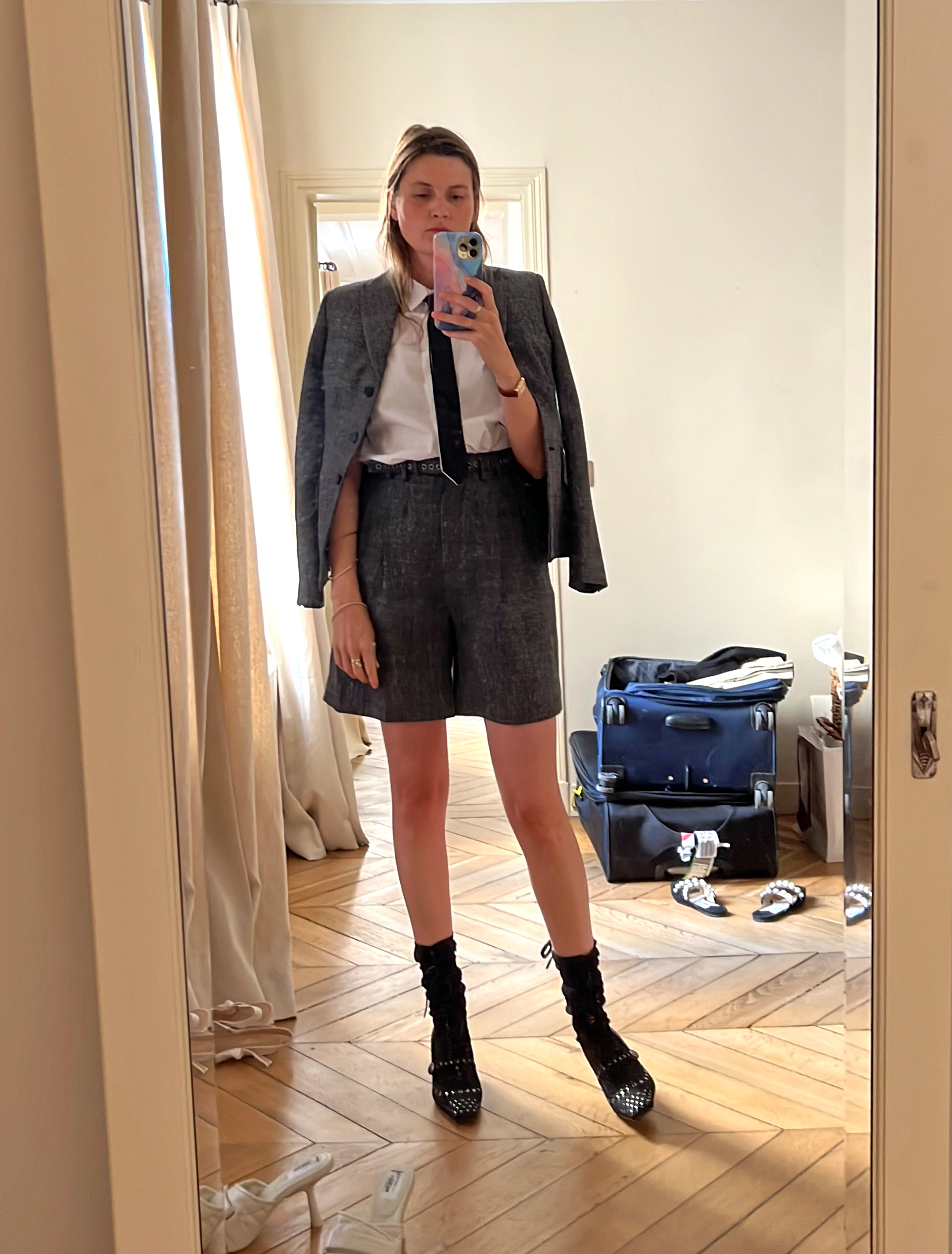
Maybe because everyone was in bows and scarves and soft things, and I wanted a straight line, something that says, “I stand up straight.” My ties are vintage Charvet from Vinted. I wear them with a blazer and miniskirt, or a pair of shorts, depending on the day. Sometimes, I look like a confused mix between a Tokyo schoolgirl and Richard Gere in American Gigolo.
L. smiles. “The tie is your ironic armor. You crave structure, but you don’t want anyone to take it too seriously.” Then, casually, she says, “It’s also erotic, the act of tightening, loosening. Control and surrender, in the same gesture.” And that’s exactly why I love it. It's a fantasy, perfectly managed.
The famous frog face rain clogs from JW Anderson.
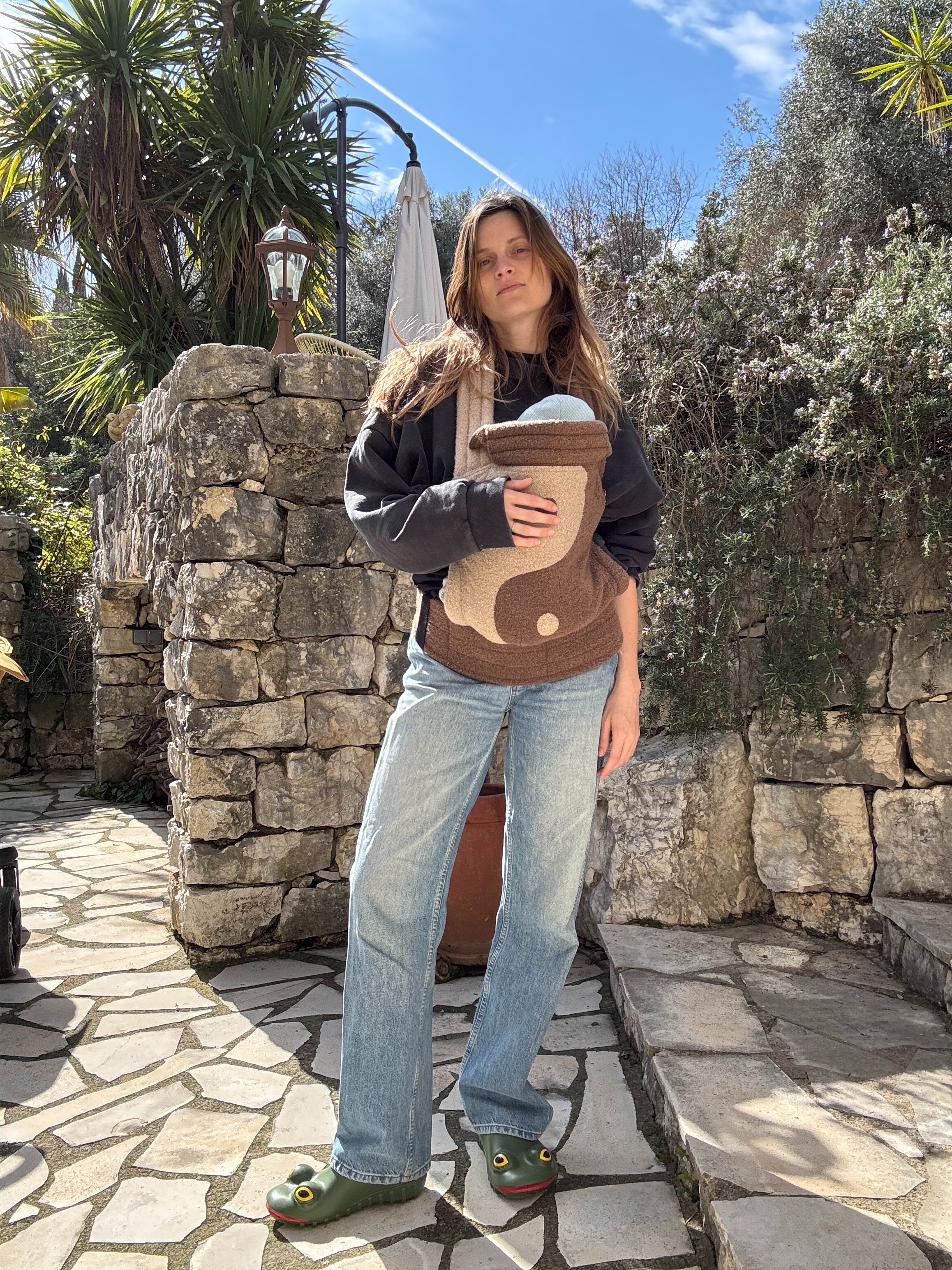
L. blinked. “Ah, regression phase of the ‘moi peau,’” she says, half-joking, half-serious. These clogs make me laugh. They make me happy. They go with nothing and everything. I wear them when it rains, when I’m tired, when I don’t want to care. “It’s the inner child taking over,” she says. “Pleasure without justification.”
I tell her they were practical. She shrugs. “Practicality is desire in disguise.” And that's true. They're absurd, liberating, and perfectly unserious.
A long, double-breasted, leopard-print Bluemarine coat with fuzzy blue faux-fur cuffs and a collar. Like a fashion editor’s coat fused with a child’s toy.
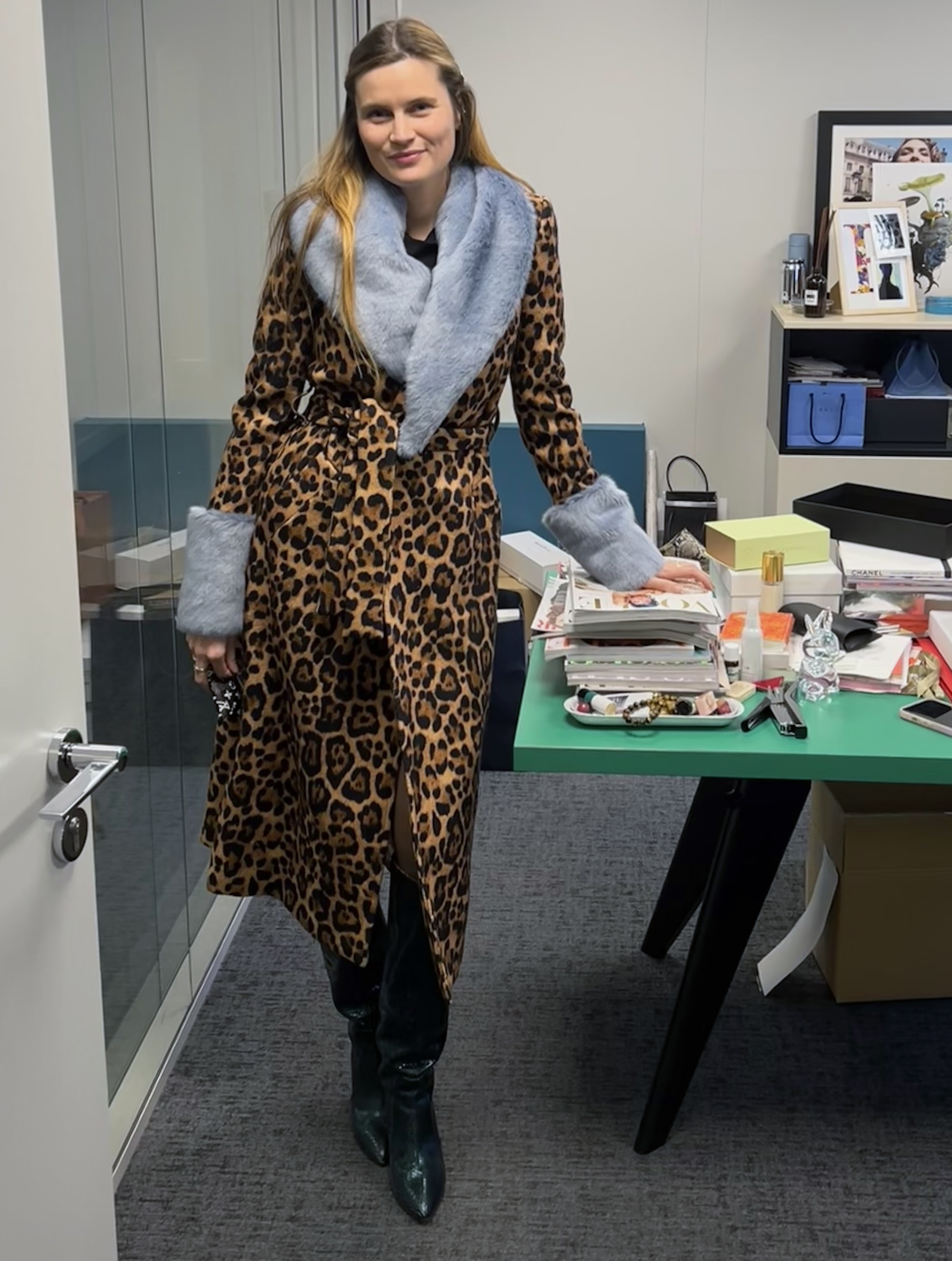
I show her the photo, a little embarrassed. She studies it for a long moment. “That coat has a lot to say,” she says. I then explain that I wear it with bright green vinyl Paris Texas boots that I don’t walk in; I usually change into flats and save the boots for meetings and moments when I need to “hold my role.”
“So it’s your portable self-skin,” she says. I laugh. “Exactly. Foldable armor,” I say. “And the blue, that’s tenderness. Winnicott’s transitional object. Your adult comfort blanket.” I tell her it’s just my serious-girl outfit pretending not to be. She doesn’t disagree. “And the leopard, of course, that’s civilized animality. Lacan would’ve loved it: controlled jouissance. Desire disguised as officewear.” I jot that one down for later.
I show her the picture. She’s already preparing her analysis. Tight curls pinned above the ears, verging on childish. A beige knit dress sprinkled with tiny bows. Very short. “Your femininity is never given, it’s performed,” she says. “Those curls, pure Dolto. The body’s first language, revisited. The little girl restyled, recontrolled.”
I tell her it was the hairstylist’s idea and that I just never know how to say no. “And the bows,” she adds, “are a pure signifier. The link and the constraint, all at once.” I ask, “So I’m tied up but free?” She smiles. “Exactly. And the knit, that’s the transitional space. The thread between you and the world.” I look again at the photo. It’s definitely too much. But it speaks fluently.
L. closes her imaginary notebook, or maybe just her expression. “See? I didn’t analyze you,” she says. “I just listened to your clothes talk.” I laugh and ask her, “What did they say?” She replies, “That they like you, but they’re exhausted.”
She sets down her cup. I gather my photos. The silence that follows feels like the end of a session that never started. Before I leave, she adds, almost gently, “I’m a little disappointed, you know. You didn’t show me your real self, the one I see in the stairwell. The sweatshirt, the messy bun, the sunglasses half falling off. Those outfits talk, too. Maybe more than the rest.” I smile, embarrassed. She’s right, of course.
As she helps me into my coat, she says, “We spend our lives trying to dress ourselves in who we are. It’s already a lot.” I walk down the stairs a little slower than usual. Back home, I open my closet. For the first time in a while, it looks alive. Not an archive. Not a museum. A language. A little chaotic, a little excessive, but unmistakably mine.
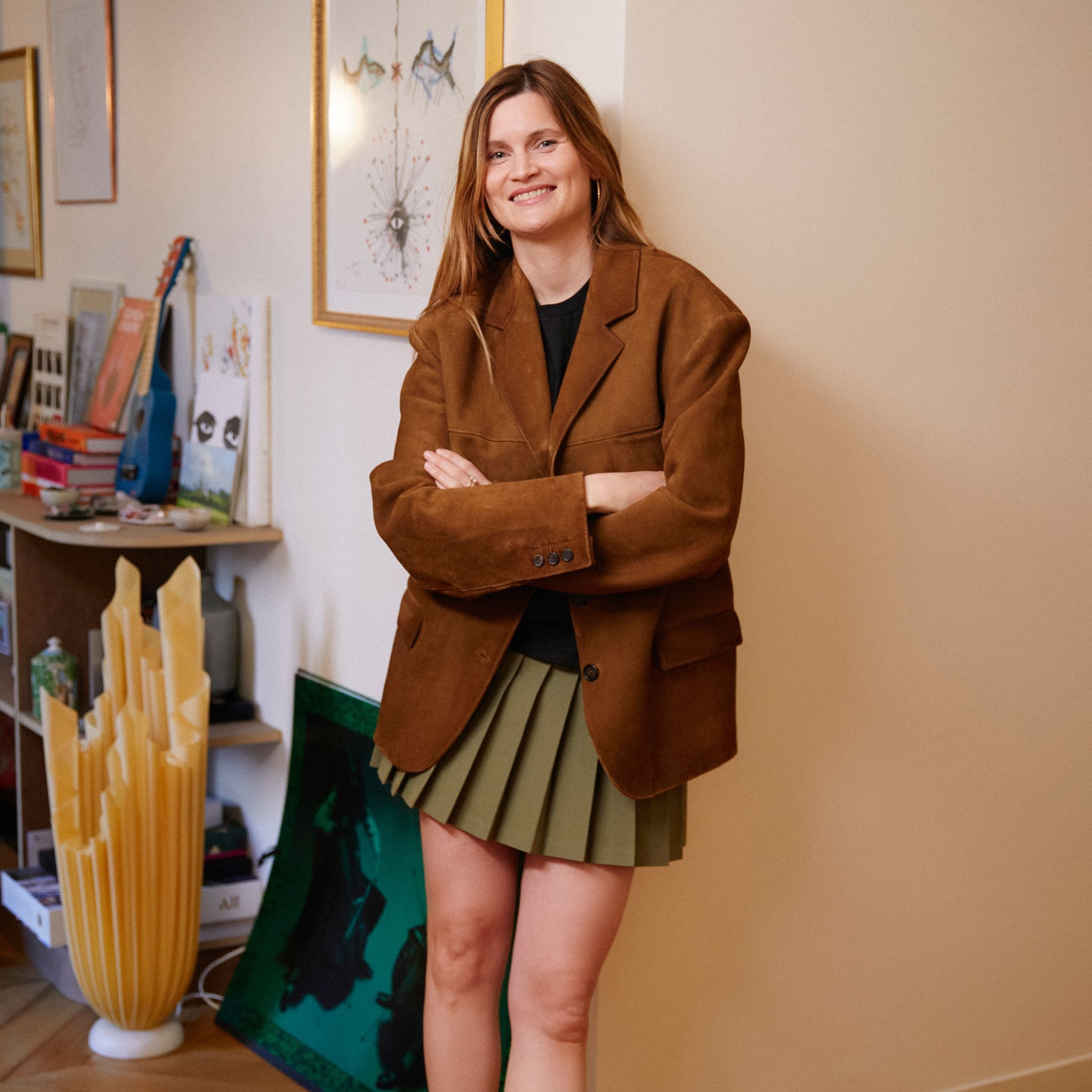
Parisian by adoption and Norman at heart, Eugénie Trochu combines a sharp, free-spirited voice and style. A 360-degree thinker and doer, she works to redefine modern French chic. After ten years shaping the editorial identity of Vogue France across various departments, she was appointed head of content in 2021 and led the transformation of Vogue Paris into Vogue France. Her writing, instinctive and precise, reflects her style: effortlessly constructed, contrasting and detailed. At the intersection of journalism and fashion, she is now working on her first book, exploring fashion as a space of memory and reinvention.
-
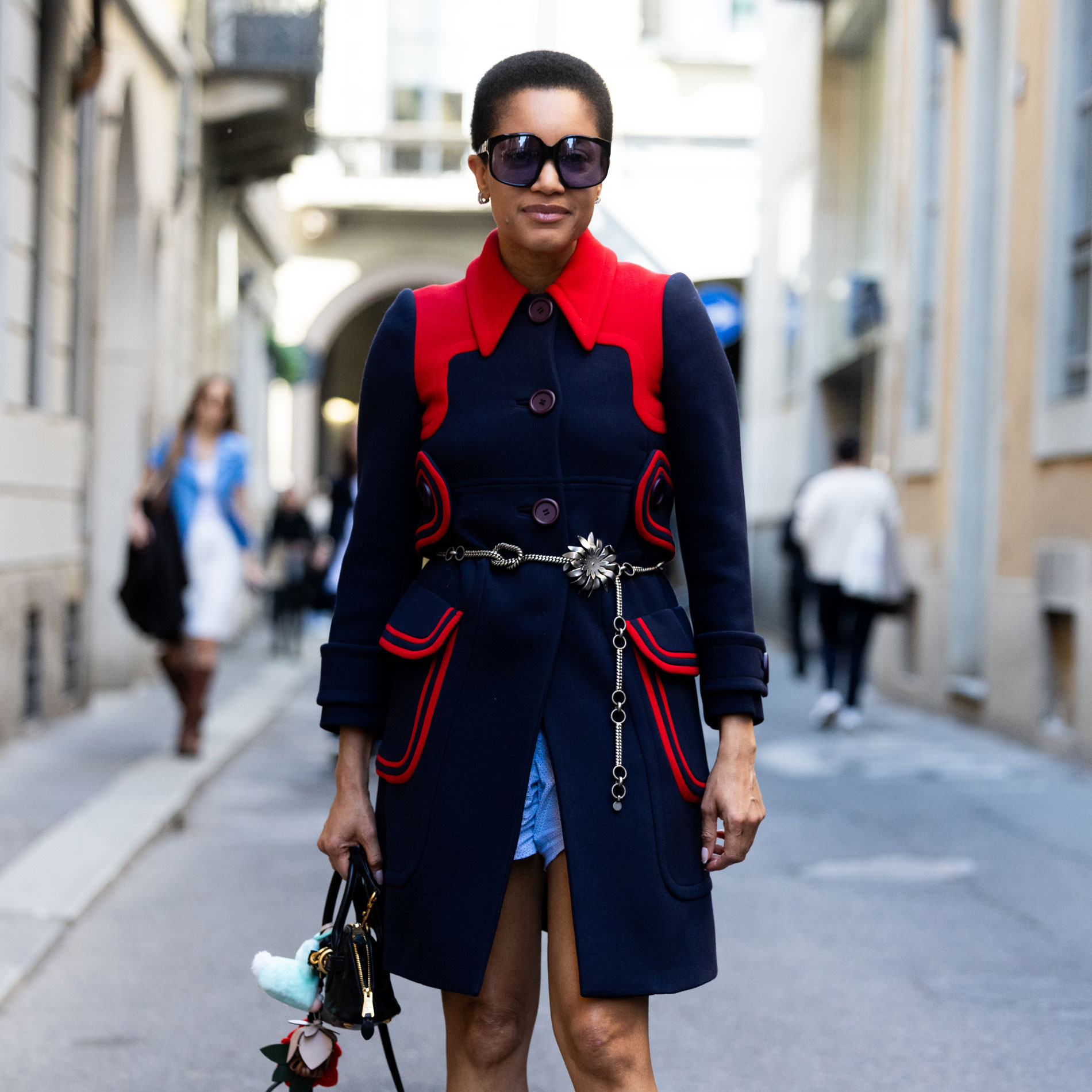 I've Lived in Milan for 20 Years—3 Styling Tricks I've Learned From Italy's Chicest Women
I've Lived in Milan for 20 Years—3 Styling Tricks I've Learned From Italy's Chicest WomenThese tips are so easy to execute.
-
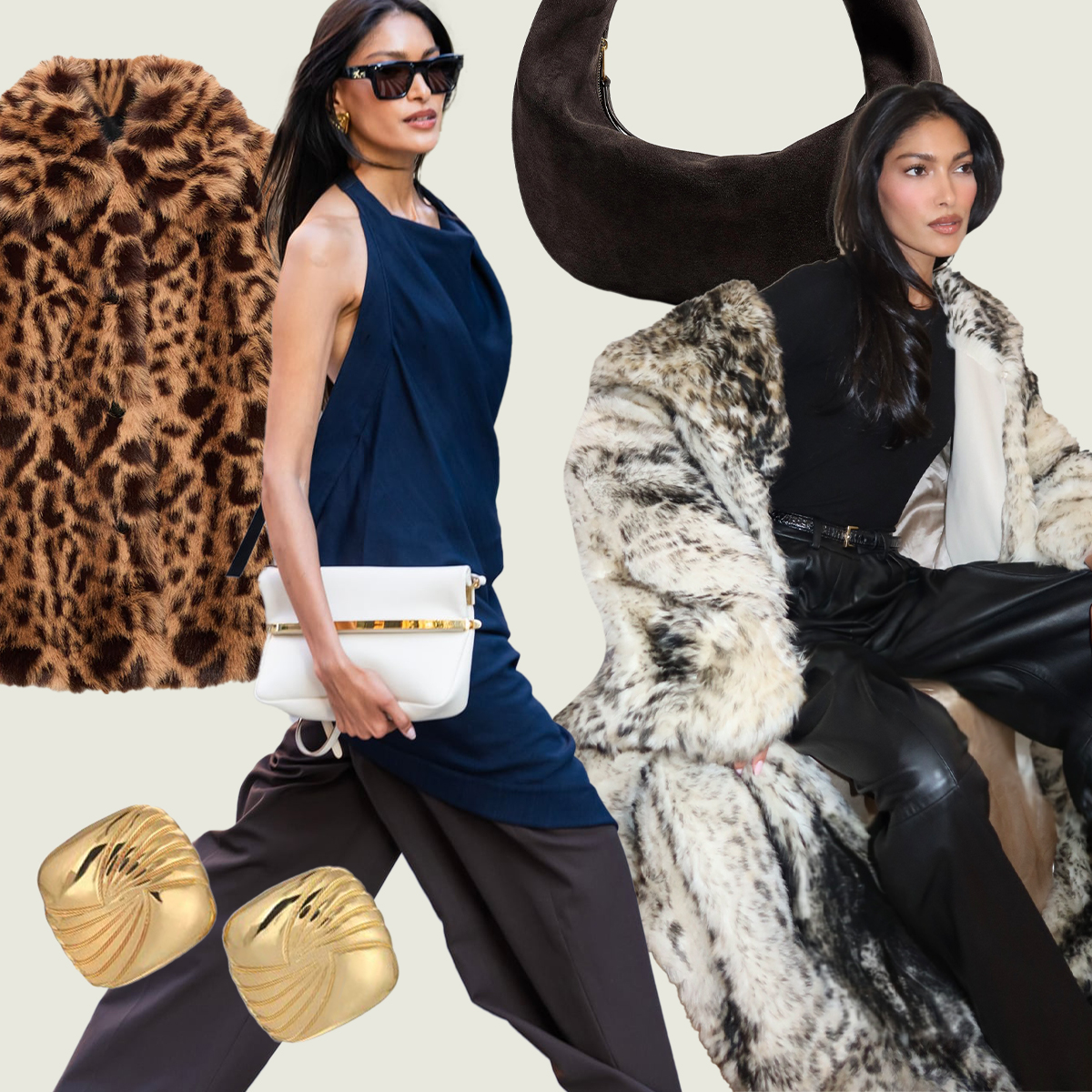 I Love NYC Fashion: This Is How the City Is Creating, Defining, and Dominating 2026 Style Trends
I Love NYC Fashion: This Is How the City Is Creating, Defining, and Dominating 2026 Style TrendsI'm in a New York state of style.
-
 Here Are the 4 Trends I'm Most Excited to Wear for Winter in NYC
Here Are the 4 Trends I'm Most Excited to Wear for Winter in NYCThese elevate any wardrobe.
-
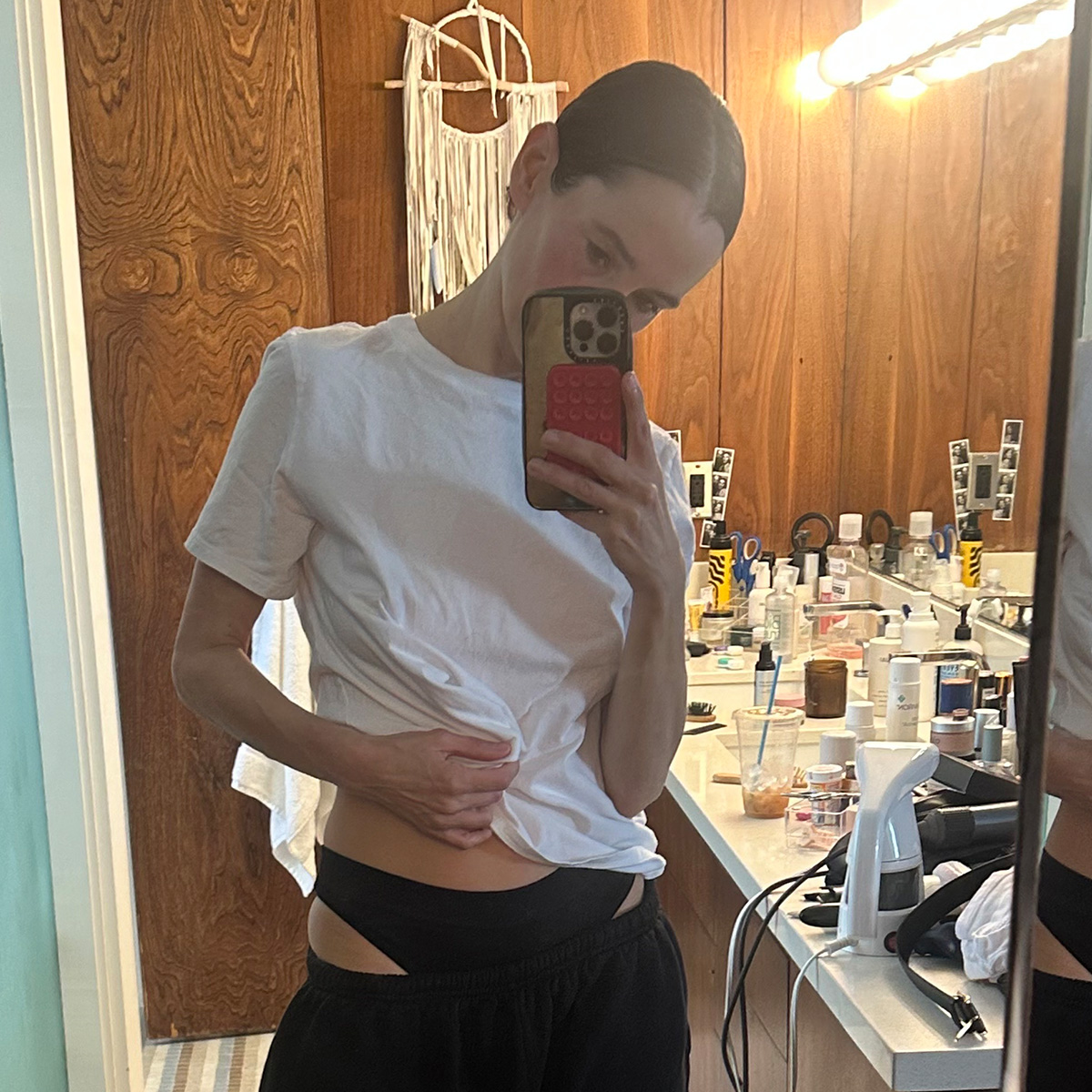 I'm a Stylist Who Travels Constantly—This Is All I Want to Wear After a Long Trip
I'm a Stylist Who Travels Constantly—This Is All I Want to Wear After a Long TripFirst-class comfort.
-
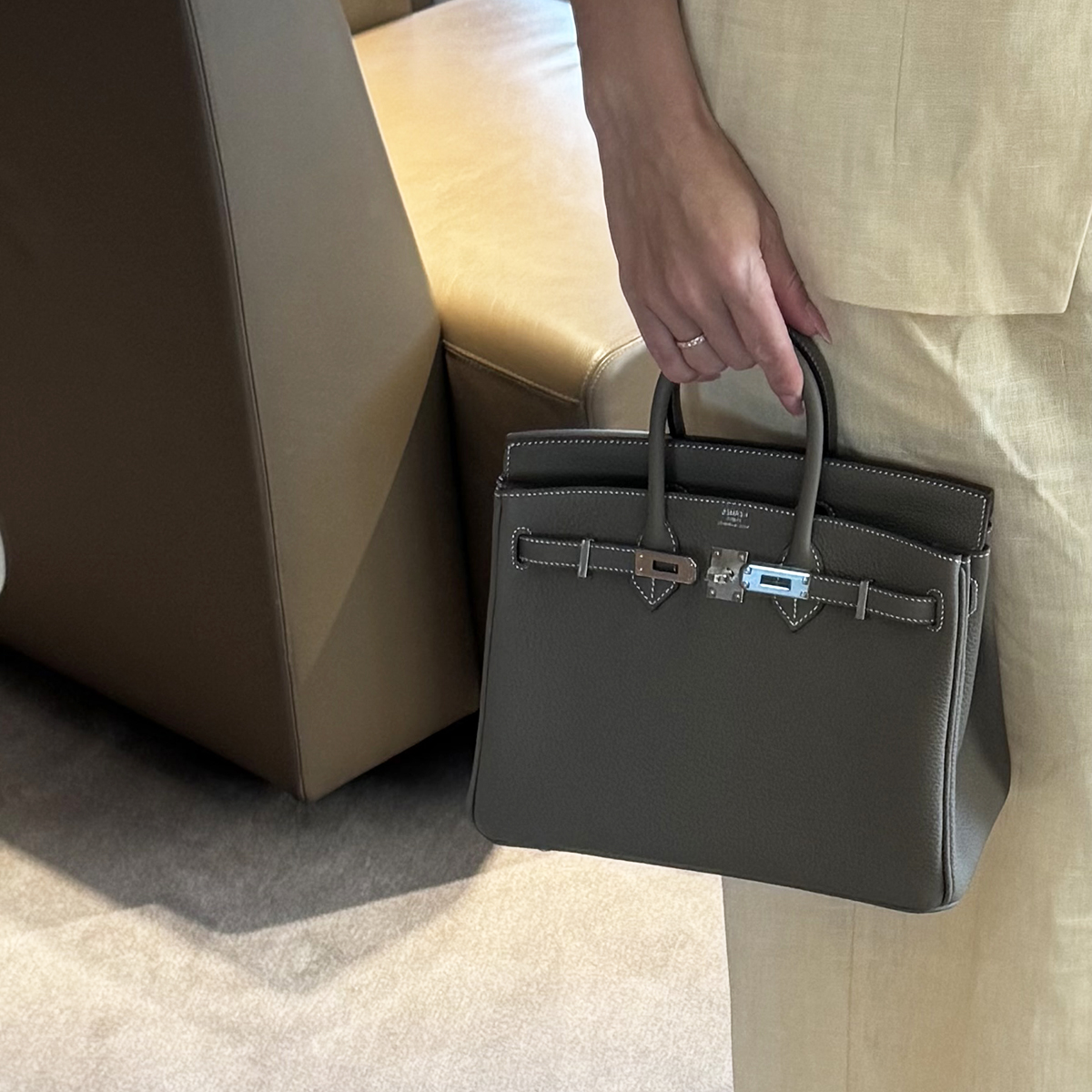 I Waited Years to Get an Appointment at the Hermès Flagship Store in Paris—See What It Was Like and What I Brought Home
I Waited Years to Get an Appointment at the Hermès Flagship Store in Paris—See What It Was Like and What I Brought HomeIt's at the top of every fashion person's bucket list.
-
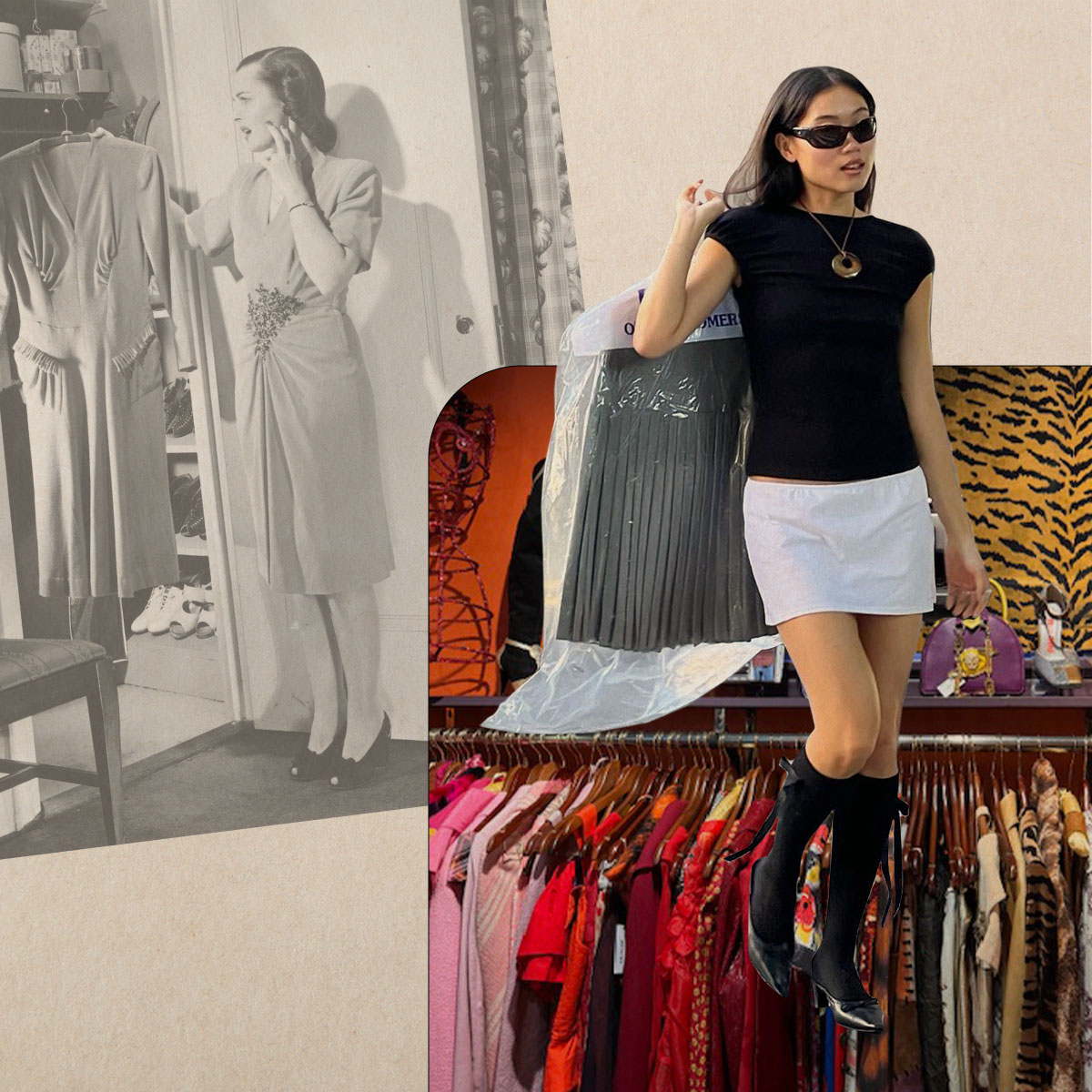 The 8 Best Ways to Care for Your Vintage Clothing, According to an Expert
The 8 Best Ways to Care for Your Vintage Clothing, According to an ExpertTips and tricks for keeping your vintage buys in mint condition.
-
 This Chic Outfit Is Perfect for Paris, But I'm Going to Wear It in the Midwest and NYC
This Chic Outfit Is Perfect for Paris, But I'm Going to Wear It in the Midwest and NYCThis simple outfit will make you look stylish anywhere.
-
 I Just Got Back From New York, London, Milan, and Paris—5 Chic Packing Staples That Worked in Every City
I Just Got Back From New York, London, Milan, and Paris—5 Chic Packing Staples That Worked in Every CityWhat to pack for a long trip, according to a seasoned fashion-month attendee.

